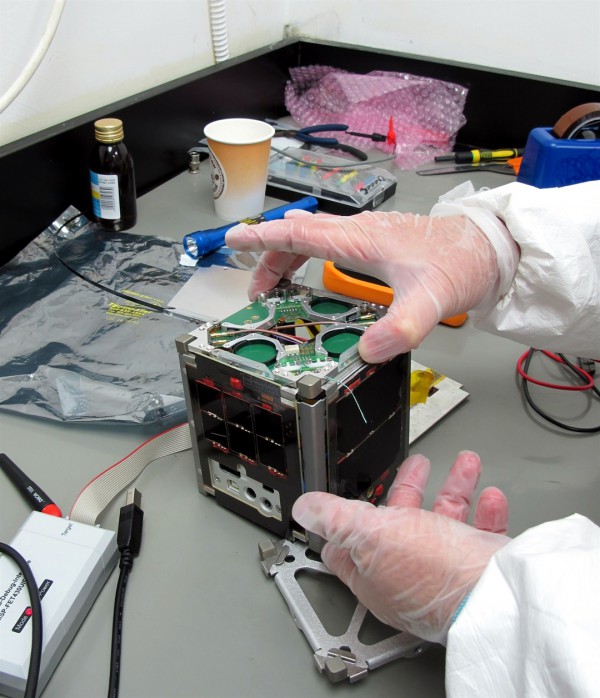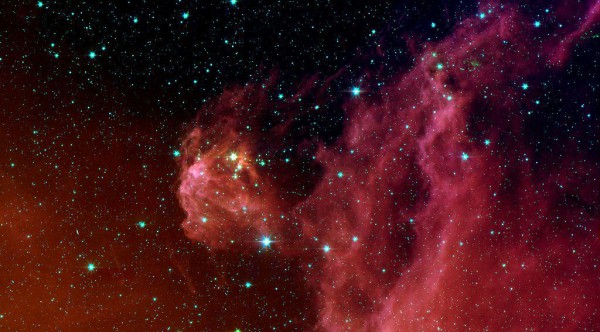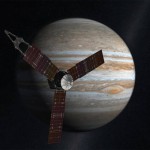“To whom will you compare Me? Or who is My equal?” says the Holy One. Lift up your eyes and look to the heavens: Who created all these? He who brings out the starry host one by one and calls forth each of them by name. Because of His great power and mighty strength, not one of them is missing.” (Isaiah 40:25–26)
At the International Astronautical Congress, Israeli space technology had the attention of thousands in the “space business” as they gathered in Israel’s booth last week to see the country’s latest innovations.
“The confidence that the heads of these agencies and corporations have in Israeli technology is evidenced by the large turnout at this event,” Science and Technology Minister Yaakov Peri said. “It shows Israel’s special standing in the world of space exploration and technology. The thousands of people who visited our exhibition will, I believe, become strong advocates for Israeli tech in their home countries.”
This year’s four-day congress wrapped up on Thursday in Toronto, Canada, a nation that leads Israel by one place on the United States-published Futron Space Competitiveness Index.
“If you read the analysis they [the Index] gave, they always say that in terms of technology, we are a leading country, but what lowers our mark, our grade, is the scale of civilian activity. And this is what we are trying to change,” said Israel Space Agency head and IDF Reserve General Isaac Ben-Israel. (Toronto Star)
Next year’s International Astronautical Congress will be held in Israel.
The Israel Space Agency was formed in 1983 under the Ministry of Science and Technology and has branched increasingly into environmental uses.
Israel is one of only seven countries that builds and launches its own satellites.
Just this summer, the Israeli student-built Duchifat-1 satellite was launched to capture distress signals from around the globe 24/7.

Duchifat 1, a nanosatellite designed and produced by Israeli teens to locate lost travelers, was launched into space on June 19, 2014.
As well, Israel has improved an all-weather, night-or-day synthetic-aperture radar (SAR) system and has satellites capable of monitoring minute agricultural shifts—another highly innovated sector in Israel. (Times of Israel)
Because high-resolution satellite images are a new standard for consumers, Israel Aerospace Industries Ltd. aims to build national telecommunications satellites stressing this feature, to enter a unique niche opposite high-cost U.S. providers. (Space News)
Not all Israeli space technology was first built for space; for instance, a tiny medical camera from Israeli medical company Medigus is the eye of the Visual Inspection Poseable Invertebrate Robot (VIPIR). Already adopted by NASA, VIPIR will enable engineers to conduct space-locked equipment repairs. (NoCamels)
Israel’s civilian space technology covers the spectrum of research, science and commercial-based products, with Hebrew University adding a component to our knowledge of the universe’s breadth.
Hebrew University researchers worked with internationals to map out our galaxy’s location amid a much larger visualization of the universe, determining that the Milky Way “is actually part of a supercluster that contains a mass of one hundred quadrillion suns and 100,000 galaxies,” NoCamels reports.
University of Hawaii astronomer R. Brent Tully led the research, and named our supercluster “Laniakea,” which in Hawaiian means “immense heaven.”

Laniakea is the long chain of galaxies that covers the Centaurus Wall and the superclusters at its center: Virgo, Hydra, Centaurus and Pavo-Indus.
Some Israeli space innovators have set their sights closer to home. SpaceIL is an Israeli non-profit company venturing toward the Moon.
Fighting for the Google Lunar XPRIZE worth $30 million, SpaceIL must build a robot that successfully lands on the Moon, moves 500 meters on, above or below the Moon’s surface, and transmits live “HDTV Mooncasts for everyone to enjoy,” states Google.
“SpaceIL is the stuff of dreams. It’s the story of three young engineers who set out to realize a childhood fantasy of reaching the Moon,” SpaceIL CEO and combat pilot Eran Privman told Forbes contributor Zack Miller. “We are now making this dream a reality and through our mission to the Moon, aiming to inspire the next generation to engage with the wonders of science and technology.”
Addressing the difficult requirement to Google’s challenge of cross-lunar travel, SpaceIL is aiming to relaunch its dishwasher-sized vessel once it lands on the surface and “space hop” the required 500 meters over the lunar surface.
The $30 million in prizes will be donated to space education, so development costs still need funding. A successful crowdsourcing campaign raised $284,000 over the summer, while billionaire and CEO of the Las Vegas Sands Sheldon Adelson donated $16 million to the non-government organization. Even that is not enough, writes Miller.
“To the Lord your God belong the heavens, even the highest heavens, the earth and everything in it.” (Deuteronomy 10:14)










